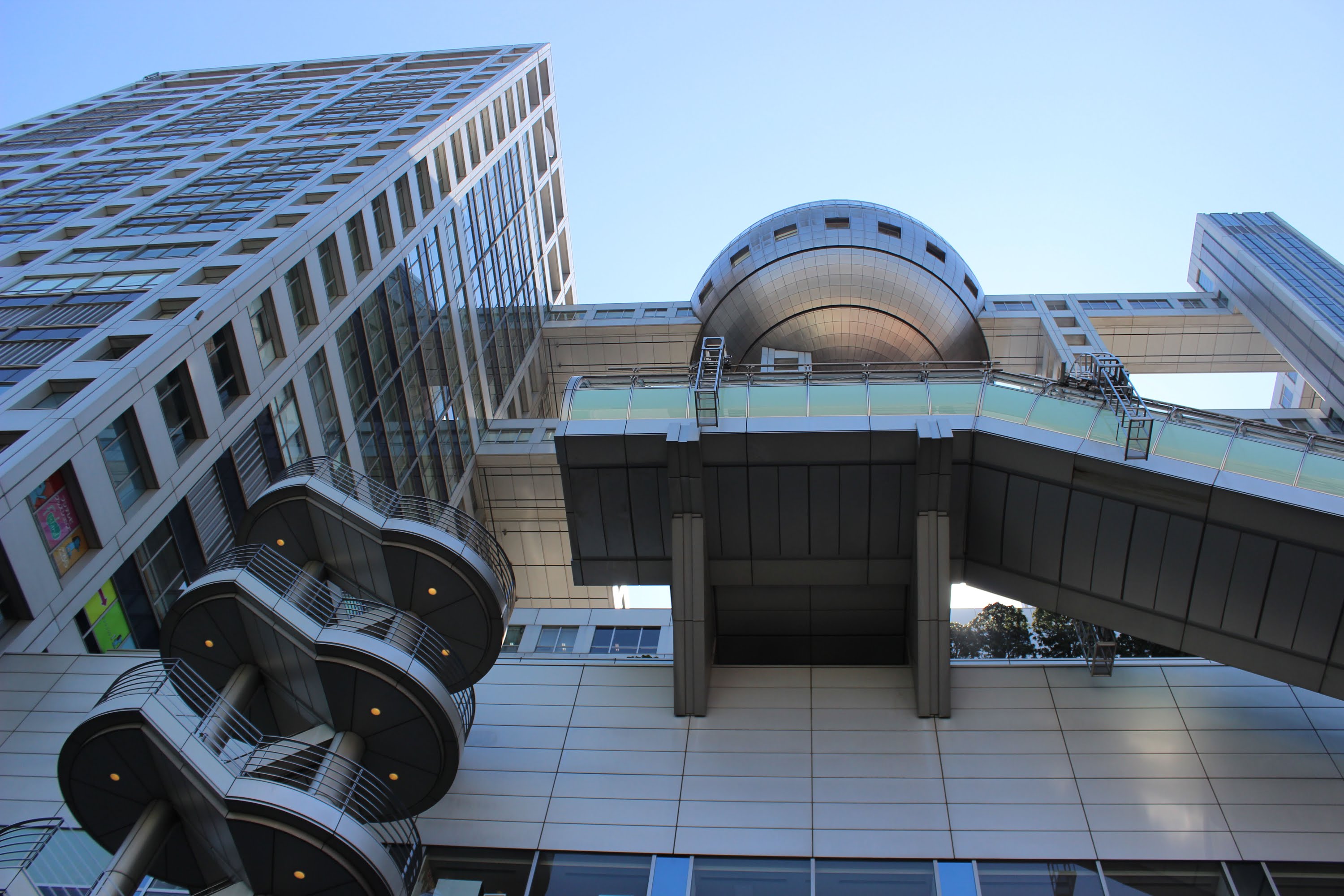Main author
Michael BrooksFuji TV Building, Tokyo
See the Unusual building of the week series here.
The Fuji TV Building is one of the most bizarre buildings in Japan. It is located in the waterfront area of Tokyo’s Minato district. The ultra-futuristic building was designed by the architect Kenzo Tange and completed in 1997. It serves as the corporate headquarters of the Fuji Television Network and houses several studios.
The 25-storey building consist of two towers connected by three enclosed pedestrian bridges, called ‘sky corridors’ which are supported by four steel columns. The corridors help to strengthen the overall structure, making it highly earthquake resistant.
The centrepiece of the building is the titanium silver ball which measures 32 m in diameter, and weighs 1,350 tons. Inside the ball is an observation platform which is open to the public, offering unobstructed views of Tokyo and Mount Fuji.
Raising the ball into place was a major engineering challenge which took a total of 9-and-a-half hours. It was balanced horizontally on, and supported by, three beams, before being raised to its finished height of 123 m by hydraulic jacks.
The studios inside both towers are insulated against the noise from the surrounding transport infrastructure and radio waves from ships passing in and out of the bay area. Acoustic performance was increased by using glass wool insulation for the studio floors, walls and ceilings.
[edit] Find out more
[edit] Related articles on Designing Buildings Wiki
- Building of the week series.
- Calakmul Corporate Building, Mexico.
- CCTV Headquarters.
- Gate Tower Building, Osaka.
- Guangzhou Circle.
- Habitat 67.
- High-tech architecture.
- Kobe Port Tower.
- Lloyds of London.
- Office Center 1000 Kaunas.
- Megastructure.
- Metabolism.
- Ministry of Transportation Building, Georgia.
- Nakagin Capsule Tower.
- Phoenix International Media Center, Beijing.
- Robot Building, Bangkok.
- Unusual building design of the week.
- Wonder Egg, Japan.
Featured articles and news
Homes England creates largest housing-led site in the North
Successful, 34 hectare land acquisition with the residential allocation now completed.
Scottish apprenticeship training proposals
General support although better accountability and transparency is sought.
The history of building regulations
A story of belated action in response to crisis.
Moisture, fire safety and emerging trends in living walls
How wet is your wall?
Current policy explained and newly published consultation by the UK and Welsh Governments.
British architecture 1919–39. Book review.
Conservation of listed prefabs in Moseley.
Energy industry calls for urgent reform.
Heritage staff wellbeing at work survey.
A five minute introduction.
50th Golden anniversary ECA Edmundson apprentice award
Showcasing the very best electrotechnical and engineering services for half a century.
Welsh government consults on HRBs and reg changes
Seeking feedback on a new regulatory regime and a broad range of issues.
CIOB Client Guide (2nd edition) March 2025
Free download covering statutory dutyholder roles under the Building Safety Act and much more.
Minister quizzed, as responsibility transfers to MHCLG and BSR publishes new building control guidance.
UK environmental regulations reform 2025
Amid wider new approaches to ensure regulators and regulation support growth.
BSRIA Statutory Compliance Inspection Checklist
BG80/2025 now significantly updated to include requirements related to important changes in legislation.

























